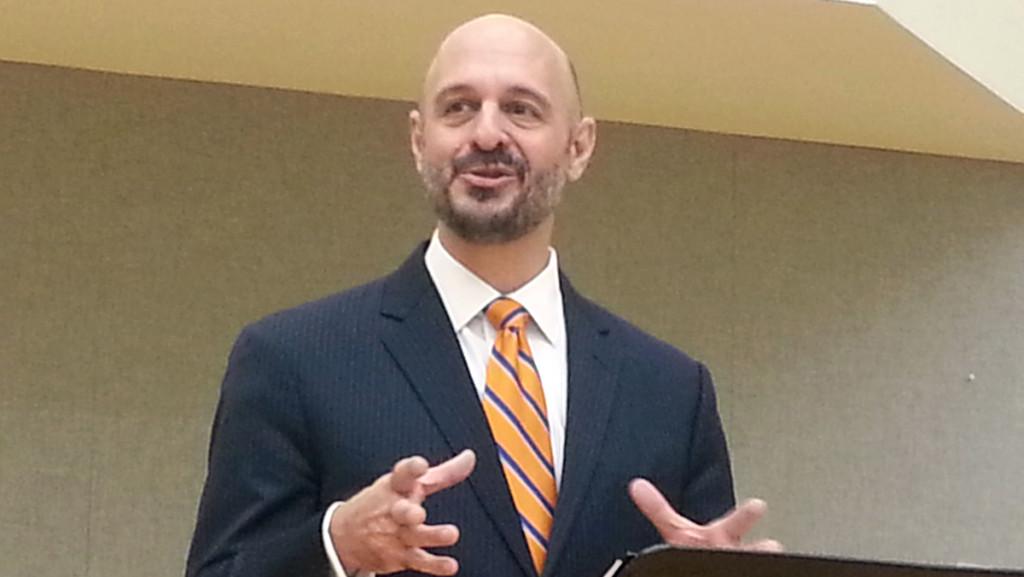During the past weeks of meeting with my students for discussions inspired by POC at IC, I have witnessed the emergence of a remarkably safe space (space where people speak honestly and vulnerably without feeling afraid, ashamed, shut down or judged). I have watched our group acquire the skills to understand safe space, maintain it, recognize places in our James J. Whalen Center for Music where this space exists, and where it has yet to be built. I cherish many valuable things about our group practice. This is my attempt to describe them in the hope they might help others working to create similar space.
For me, the issue boils down to one remarkably simple (yet remarkably complicated) principle:
If the space is not safe for everyone, it is not safe for anyone, and it’s surprisingly easy to leave someone out. Like yourself, for example.
We’ve all seen media accounts of the inherent dangers of “driving while black.” Many people of color do not feel safe in a variety of situations because of ways in which they are visibly different. While I myself feel remarkably safe in Ithaca, there are parts of the country where I avoid the topic of family. The question, “Do you have a family?” makes me feel afraid when I am in certain regions of the U.S., because I am married to a man. I feel unsafe in some places. I imagine all of us can think of scenarios in which one group or another might not feel safe.
The fascinating thing is who we don’t think about and who we don’t include. For example, I — the Dean — did not feel safe in my very first conversation with my own students. I felt afraid. Why? Because I’m the Dean. I’m supposed to know things. Lots of things. I’m supposed to set an example. An annoying little voice inside of me says (almost every day), “You’re supposed to be perfect.”
But I am not perfect. I cannot be. Like most of us, I hide my imperfections in a corner and hope no one will find them. In this case, I cannot know certain things about race because I grew up in a system that offered me special privileges because I am white. So here I am: I’m the Dean, I’m supposed to know things about race that I can’t know because I never had to learn them. Then, in the the midst of my effort to create safer space for students of color — surprise — they created safe space for me!
Safety, for me, means a community where I can make mistakes, ask questions, ask stupid questions, appear ignorant, yet feel safe, unafraid, unashamed, welcomed. Safety means I can say something insensitive in our dialogues on color, have it brought to my attention, apologize and learn, without shame and without fear. And our students offered that safe space for me at the very moment I was hoping to create it for them!
When we set out to create safer space for anyone, we create safer space for everyone. Everyone. As you read this, who are you leaving out? Do you have someone you traditionally forget to include in safe space, someone you think doesn’t deserve it? The lesson I have learned from practicing with my students is that we must not only extend the space to every single person in the room — we must actually extend the space to people not currently in the room if it is to be truly transformative space.
One of our group’s ground rules, “to refrain from speaking about those who are not in the room,” is based on this principle. If we speak of others outside the group in a way that would make them feel shamed, belittled or afraid, then each of us, subconsciously, asks: “I wonder what this group might say about me when I’m not in the room!” In safe space there is no “they.” There is only “we.” The goal is to gradually enlarge the “we” every time we meet until eventually the “we” is the entire world.
The current popular debate being tossed around in the media (“Whatever happened to freedom of speech?”) is a false dichotomy. There is no conflict between free speech and safe space. If the space is not safe for (fill in your blank) then it’s not safe for anyone. Each of us can speak the unedited truth of our own experience without harming or degrading others. If someone feels they do not have freedom to speak, we must help that person expand their own safe space through the practice of creating it for others. Just as it happened for me, if you sincerely try to create a safer space for someone else, it’ll automatically get safer for you, too.
In my practice with my students, these are the things that seem to support the emergence of safe space for us:
1. Speak from the heart. Use “I” statements. Speak from your personal experience and feelings, not political theories or beliefs.
2. Let others speak without interruption; hear people until they finish.
3. Listen actively and carefully. Try to listen to someone else through the lens of his/her own experience rather than through the lens of your beliefs and values.
4. Refrain from speaking about people who are not in the room.
5. Refrain from speaking of others as objects (“the blacks, the gays, the Jews, the Republicans, white people”)
6. Everyone deserves to feel safe, unashamed, unafraid. Don’t leave anyone out.
7. Make sure you feel safe before trying to create that space for others. Take care of your own needs first. If you need to pause or leave the room for a drink of water or take care of some emotions, do that. Put your own oxygen mask on first before assisting other passengers.
Karl Paulnack is the dean of the School of Music. Email him at [email protected].














